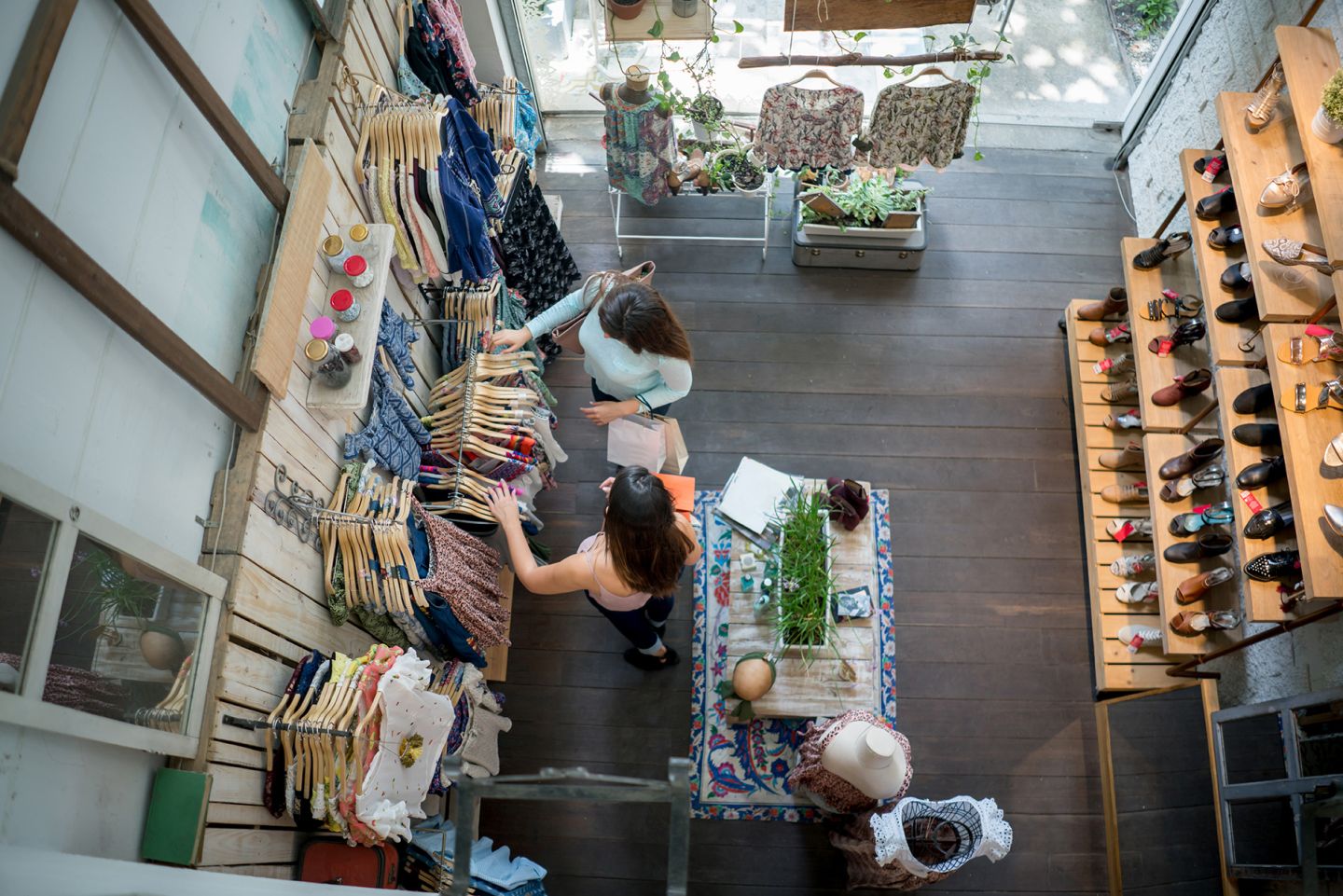Which retail and restaurant and restaurant trends will most influence real estate decisions in 2018? Here are our annual predictions as featured in Buxton’s 2018 Retail and Restaurant Real Estate Outlook.
Trend #1: Experiential Retail
The way that brick and mortar locations are used is changing. In the e-commerce era, customers choose to visit physical store locations largely because of the experience. Retailers are responding by reimagining their stores as space for classes, events, demonstrations, and other elements that push the experience envelope.
Restaurants aren’t immune to the call for better customer experiences. In an age where consumers love to document and share unique dining experiences on social media, traditional chain restaurants are finding that they need to innovate to compete. For example, Starbucks is investing in “roasteries” that allow customers to experience the process of creating a cup of coffee from start to finish.
The bottom line for real estate professionals is this: the way that store space is being used will continue to change, which will influence real estate requirements. More brands will seek spaces with unique aesthetics and places for events, classes, or in-store restaurants.
Trend #2: Mixed-Use Retail Developments
A close cousin to the experiential retailing trend is the movement toward mixed-use retail developments. While retail developments have often contained a mixture of stores, food, and entertainment, the ratio is changing. Retail author Doug Stephens says the new formula for success is 70 percent food, entertainment, and lifestyle experiences, with 30 percent dedicated to retail.
Mixed use development also taps into consumers’ desire to return to the pre-World War II “town square” model of the past. Throughout history, people have shopped, dined, worked, and lived in a relatively small geographic space. Mixed use development is not only convenient, but it also fosters a strong sense of community that many consumers seek.
The number of mixed-use retail development projects is growing and represents some of the most desirable retail space. Since existing store formats may not fit the requirements of denser mixed-use space, retailers and restaurants who want to participate in this trend should be prepared to develop alternative store layouts.
Trend #3: Pop-up Stores and Shorter Lease Terms
Pop-up stores are not a new topic, but the trend has picked up momentum and is now valued at $50 billion in the U.S. annually, reports the American Marketing Association. A pop-up store appeals to both traditional retailers looking to make a splash with a new product or seasonal offering, as well as e-commerce retailers looking to experiment with physical stores without the long-term real estate commitment.
For restaurants, the pop-up store phenomenon can take the form of food trucks or food halls. Food halls represent a particularly hot trend with the number of open food halls expected to exceed 200 in 2018.
Pop-up stores require very short lease terms, but retailers are pushing for shorter lease terms in non-pop-up locations as well. In the past, it was common for retailers to be locked into 20-year lease terms. That is not the case today. Retailers are on the hunt for shorter lease terms and landlords are jumping on this trend to fill vacant spaces left by recent store closures.
Both pop-up stores and shorter lease terms mean the real estate team must play a more active role in reevaluating existing sites and determining whether to stay or move to a new location. Rather than making real estate decisions for a specific site once every 20 years, decisions will be made much more frequently.
Trend #4: Omnichannel Retailing
Omnichannel initiatives such as click-and-collect have dominated the industry and continue to be a major focus of retailers’ strategies.
The question is, why?
The answer lies simply in convenience, notes Buxton Vice President Peter Healey.
“Convenience continues to be a dominant and growing force in retail. Retailers must face the challenge of adapting to a customer base that increasingly demands online options while continuing to provide tangible interaction through traditional brick-and-mortar access points. A balanced approach between online and brick-and-mortar is the key to winning in 2018.”
Perhaps the biggest development in the omnichannel evolution in the coming year will be the explosion of online sales in the restaurant industry, which was once considered to be “Amazon proof.” Delivery services like UberEats and DoorDash are redefining how consumers interact with restaurants, and restaurants are pushing their own to-go and delivery programs. Nation’s Restaurant News reports that to-go and delivery represent 19.2 percent of orders at Buffalo Wild Wings, while Bloomin’ Brands believes off-premise sales could reach 25% of their total business.
Given the importance of balancing online and in-store strategies, retailers and restaurants need to understand how the two channels interact.
“The idea of retailers understanding how brick and mortar and online customers play with each other is now coming to the forefront,” explains Tim White, senior vice president at Buxton. “Before, there was an idea that there is not any impact between the two channels. However, the studies we have done for our retail clients have proven there is an impact, and if executed correctly, can be a huge benefit in capturing share and dollars from inside and outside the traditional trade area.”
Trend #5: Malls Reimagined
Everyone agrees that the mall of the past cannot be the mall of the future, but are malls dead?
“I wouldn’t say malls are dying; I would say they are changing,” comments Cody Howell, senior vice president at Buxton. “This is caused by the widening middle-income gap, lease renewals rolling over and even the rise of e-commerce…. Mall tenants who understand their customers’ behaviors will survive and take full advantage of a change in the mall landscape.”
So how are malls responding to changes in consumer behavior and adapting to a new era of retailing? They’re focusing on experience, redeveloping into mixed-use properties, emphasizing food and entertainment, and even offering opportunities for pop-up retailing to make getting into a mall “as easy as booking a hotel room.”
Alternative uses will be most common at malls where the trade area has shifted to the point that traditional retailing no longer makes sense. As Healey sums up:
“Malls aren’t dying, but they are evolving. As with any evolution, some malls in ‘bad’ trade areas are going to become extinct while malls in ‘good’ trade areas will continue to thrive. The key to prosperity is proper alignment of tenants and trade area households. Being the most convenient option for the best types of customers will provide a viable path forward. As major anchors relocate (or go out of business) malls must get creative in how they fill these large voids. Knowing what tenants to recruit so that a win-win-win situation between the mall, retailer, and customers is created is the key to survival of the mall.”
Want to Learn More?
To learn more about the trends influencing retail and restaurant real estate decisions and see our annual ranking of hot markets, download our 2018 Retail and Restaurant Real Estate Outlook.


